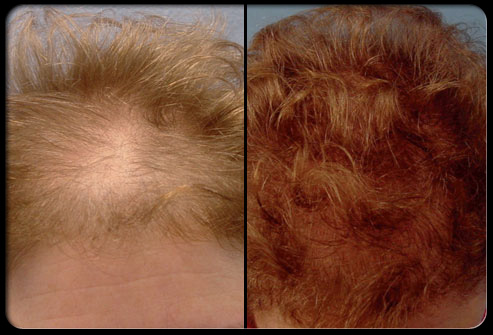Surgical Hair Transplant in India
What is Surgical Hair Transplant ?
Hair transplantation is a surgical technique that moves individual hair follicles from a part of the body called the 'donor site' to bald or balding part of the body known as the 'recipient site'. It is primarily used to treat male pattern baldness. In this minimally invasive procedure, grafts containing hair follicles that are genetically resistant to balding, like the back of the head, are transplanted to the bald scalp. Hair Transplantation can also be used to restore eyelashes, eyebrows, beard hair, chest hair, pubic hair and to fill in scars caused by accidents or surgery such as face-lifts and previous hair transplants. Hair transplantation differs from skin grafting in that grafts contain almost all of the epidermis and dermis surrounding the hair follicle, and many tiny grafts are transplanted rather than a single strip of skin.
Since hair naturally grows in groupings of 1 to 4 hairs, today’s most advanced techniques harvest and transplant these naturally occurring 1–4 hair "follicular units" in their natural groupings. Thus modern hair transplantation can achieve a natural appearance by mimicking nature hair for hair. This hair transplant procedure is called Follicular unit transplantation (FUT). Donor hair can be harvested two different ways: strip harvesting, and follicular unit extraction (FUE).
Procedure
At an initial consultation, the surgeon analyzes the patient's scalp, discusses their preferences and expectations, and advises them on the best approach (e.g. single vs. multiple sessions) and what results might reasonably be expected. Pre-operative folliscopy will help to know the actual existing density of hair, so that postoperative results of newly transplanted hair grafts can be accurately assessed. Some patients may benefit with preoperative topical minoxidil application and vitamins.
Side effects
Hair thinning, known as "shock loss", is a common side effect that is usually temporary. Bald patches are also common, as fifty to a hundred hairs can be lost each day. Post-operative hiccups have also been seen in around 5% of transplant patients.
Other side effects include swelling of areas such as the scalp and forehead. If this becomes uncomfortable, medication may ease the swelling. Additionally, the patient must be careful if their scalp starts itching, as scratching will make it worse and cause scabs to form. A moisturizer or massage shampoo may be used.
Types of surgery
There are a number of applications for Hair Transplant Surgery, including:
Androgenetic Alopecia
Eyebrow Transplant
Frontal Hair Line Lowering or Reconstruction (naturally high hairlines without an existing hair loss condition)
Hair Transplant

Harvesting methods
Transplant operations are performed on an outpatient basis, with mild sedation (optional) and injected local anesthesia. The scalp is shampooed and then treated with an antibacterial agent prior to the donor scalp being harvested.
There are two main ways in which donor grafts are extracted today: strip excision harvesting, and follicular unit extraction.
Harvesting Strip harvesting is the most common technique for removing hair and follicles from a donor site. The surgeon harvests a strip of skin from the posterior scalp, in an area of good hair growth. A single-, double-, or triple-bladed scalpel is used to remove strips of hair-bearing tissue from the donor site. Each incision is planned so that intact hair follicles are removed. The excised strip is about 1–1.5 x 15–30 cm in size.
Follicular unit extraction (FUE)UE takes place in a single long session or multiple small sessions. The FUE procedure is more time consuming than strip surgery. An FUE surgery time varies according to the surgeons experience, speed in harvesting and patient characteristics. The procedue can take anywhere from a couple hours to extract 200 grafts for a scar correction to a surgery over two consecutive days for a megasession of 2,500 to 3,000 grafts.